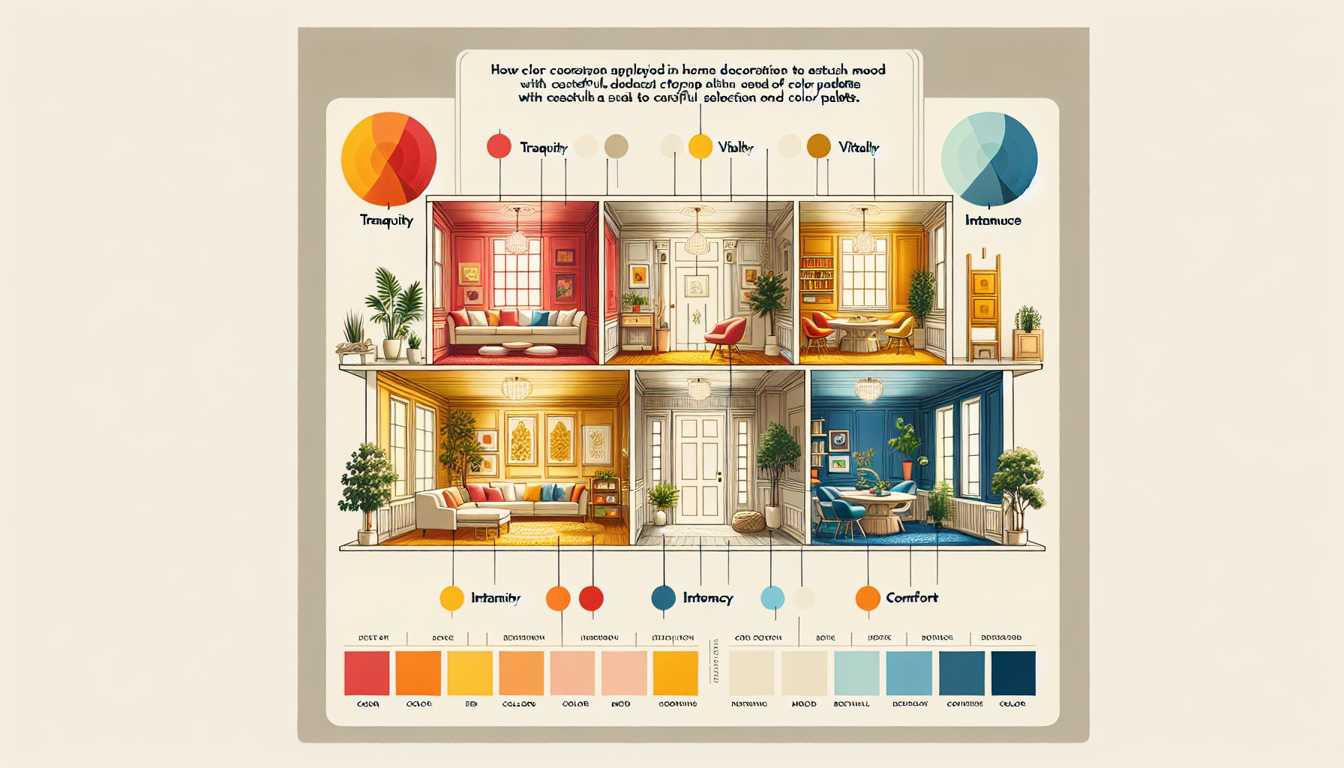
Color Theory in Home Decor: Creating Mood with Palette Choices
In the realm of home decor, the significance of color theory is paramount. The colors chosen for a home's interior can profoundly influence the mood, atmosphere, and perceived space within. Understanding color theory enables homeowners and designers to create environments that reflect their desired aesthetic and emotional outcomes. This article delves into the basics of color theory and its practical applications in home decor to create mood and enhance living spaces.
Understanding Color Theory
Color theory is a comprehensive guide that explains how colors interact with each other and the effects they have on a viewer. It encompasses the color wheel, color harmony, and the context in which colors are used. The color wheel, a fundamental tool in color theory, illustrates the relationships between primary colors (red, blue, and yellow), secondary colors (green, orange, and violet), and tertiary colors (the blend of primary and secondary colors).
Color Harmony
Creating a harmonious palette involves selecting colors that complement each other and create a balanced visual experience. Common schemes include:
- Monochromatic: Utilizes various shades, tints, and tones of a single color, creating a cohesive and soothing look. For example, a living room featuring different shades of blue, from pale sky to deep navy, can evoke a sense of calm and continuity.
- Analogous: Combines colors that are next to each other on the color wheel, such as red, orange, and yellow. This scheme is often found in nature and can create a warm, harmonious space.
- Complementary: Uses colors opposite each other on the color wheel, like blue and orange, to create a vibrant, high-contrast look that can energize a space.
Mood Creation with Colors
Colors have the power to evoke emotional responses and set the mood for a room:
- Warm colors (reds, oranges, yellows) can create a welcoming and cozy atmosphere, ideal for living rooms and kitchens where warmth and comfort are desired.
- Cool colors (blues, greens, purples) are often used in bedrooms and bathrooms to create a calming and relaxing environment.
- Neutral colors (beige, gray, white) provide a backdrop that can either calm or elevate other colors, offering versatility in decor choices.
Practical Applications in Home Decor
Living Room
For a living room aiming to be a relaxing gathering space, consider a palette of cool blues and greens, complemented by neutral tones. Furniture pieces in soft gray or navy, such as the West Elm Harmony Modular Sectional, can anchor the room, while accent pieces like the Anthropologie Velvet Elowen Chair in teal can add a pop of color.
Bedroom
A bedroom designed for tranquility can benefit from a monochromatic scheme of soft blues or lavenders. Bedding from Brooklinen in their Luxe Sateen in a calming lavender paired with wall colors in a similar hue can create a serene retreat. Adding a Casper Glow Light for warm, adjustable lighting can enhance the peaceful ambiance.
Kitchen
Kitchens thrive on energy and warmth, making them perfect for a combination of warm colors. Cabinets painted in a cheerful yellow, complemented by Le Creuset cookware in flame, can make the space inviting. A Smeg Retro Style Aesthetic Refrigerator in pastel blue can introduce a complementary cool tone, balancing the warmth.
Bathroom
For a spa-like bathroom, cool tones of blue and green paired with white are ideal. Sherwin-Williams' Sea Salt on the walls, combined with white subway tiles and accents like Pottery Barn's Classic Terry Robes in white, can create a clean, refreshing space.
Conclusion
The strategic use of color in home decor can transform ordinary spaces into extraordinary environments that evoke specific moods and emotions. By applying the principles of color theory, homeowners can create spaces that are not only aesthetically pleasing but also psychologically comforting. Whether seeking a vibrant living area or a serene bedroom sanctuary, the thoughtful application of color can achieve the desired ambiance, making a house truly feel like a home.


